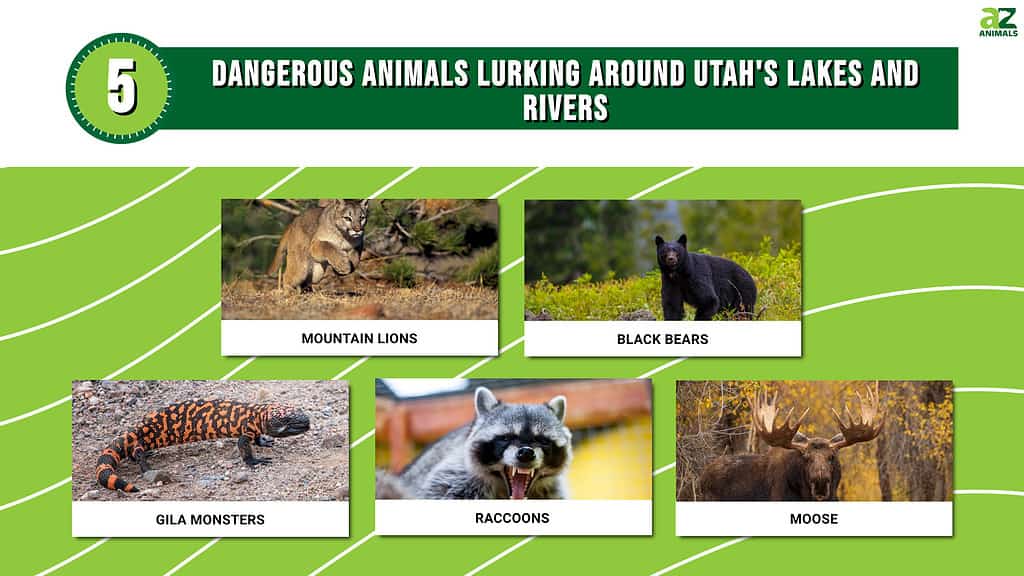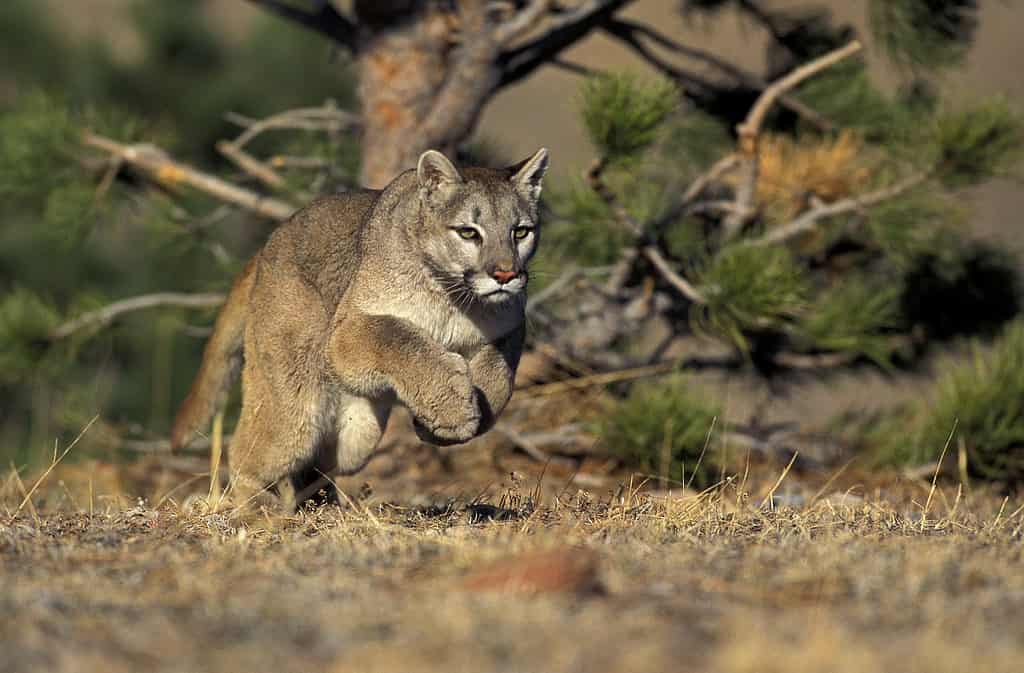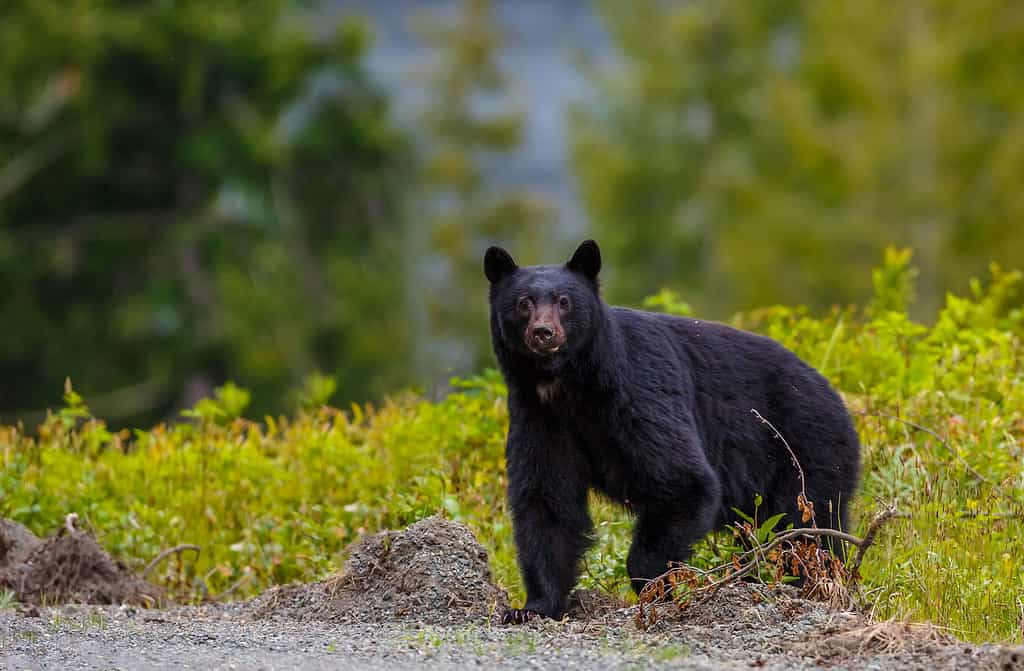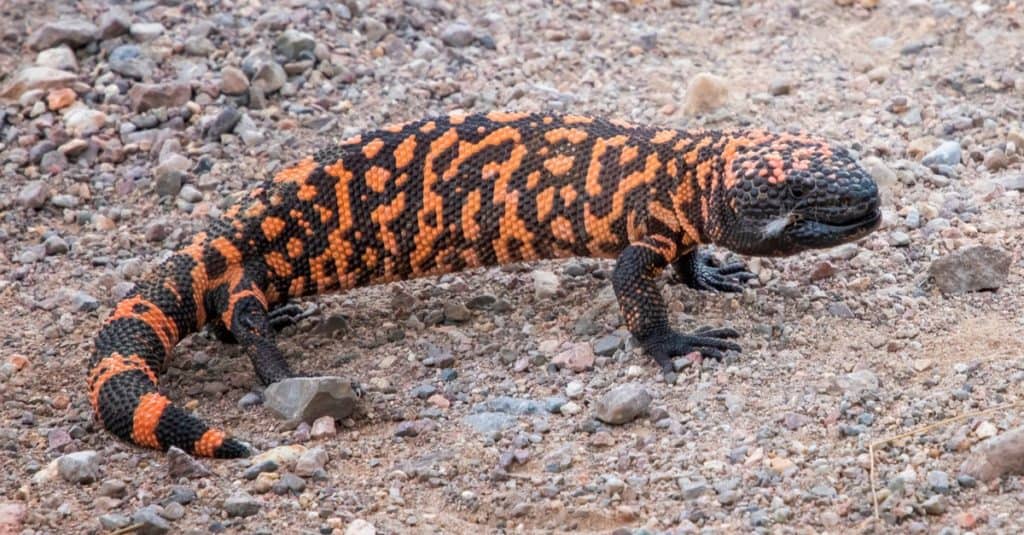Utah has some of the most beautiful lakes in the country. Actually, in Utah alone, there are at least 2,000 lakes of all sizes. The state is also home to many major rivers like the Colorado River, Jordan River, Green River, and Logan River. Around these rivers are dangerous animals that consume fish and drink the water. Are you curious about 5 dangerous animals lurking around Utah’s lakes and rivers? Follow along to learn more about these five creatures!
Are there Dangerous Animals Lurking in Utah’s Lakes and Rivers?
Thankfully, when swimming in a Utah lake or river, you won’t have to worry about dangerous animals in the water. The state doesn’t have any true water snakes or large aquatic reptiles like American alligators. Instead, the danger lies outside of the water. Still, most animals don’t actively hunt humans. It’s always important to never both a wild animal as they can attack. Even the smallest of animals can defend themselves and spread diseases.

Dangerous Animals Around Lakes and Rivers in Utah
If you are going on a hike around a lake or river in Utah, beware of dangerous animals which you may run into. Although most animals are just afraid as of us as we are of them, it’s never a good idea to touch, hurt, or feed a wild animal. Keep reading to discover 5 dangerous animals around Utah’s lakes and rivers and what to do if you spot on.
Mountain Lions
In Utah, experts estimate there are a little over 1,000 mountain lions in the wild. Another word for a mountain lion is a cougar. Mountain lions spottings are rare, but more common in the winter as they chase deer down in the valleys. You’re more likely to see a mountain lion if you’re in canyons frequented by deer. If you see one, never run and maintain eye contact. They will chase by instinct. Stand up as tall as possible and speak in a loud and clear voice to scare them away. Most of the time, if a mountain lion is in your way, it’s because you’re near their kittens.

Mountain lions can reach 50 mph in short bursts.
©iStock.com/slowmotiongli
Black Bears
The North American black bear is the only bear species in Utah. Although this animal is dangerous, strong, and powerful, it rarely causes problems. Black bears contribute greatly to the ecosystem and live in forested areas. Experts estimate there are about 4,000 black bears in Utah. Black bears generally stay away from people, however, they can show aggression when hungry. While black bears are more commonly seen in rural areas, they occasionally wander into neighborhoods looking for food after winter. Black bears are so strong they have a bite force of up to 800 PSI. So, what do you do if you encounter a black bear? Stay calm and alert. On the rare chance the bear attacks, fight back or spray them in the face with bear deterrent spray.

Black bears are dangerous animals in Utah that can live in forested areas around lakes.
©Menno Schaefer/Shutterstock.com
Gila Monsters
Have you ever heard of a Gila monster? These unique and very old venomous reptiles are native to southern Utah, but rarely seen, why is this? The exact number of Gila monsters left in the wild is known, but experts estimate there are several though. In Utah alone, there are between 400 to 800. Gila monsters are classified as near-threatened in certain states.
Gila monsters are one of the only venomous lizard species in the world. They produce toxic venom in their lower jaws. Gila monster bites are rarely fatal but are painful. Some people describe being bitten by Gila monsters as a pain similar to burning. Gila monsters are also known for latching on. They may not let go after biting. Sadly, for years, many people believed their breath was fatal, but this isn’t true. Gila monsters are sluggish animals with no reported human fatalities since 1930.

Gila monsters produce a toxic venom that is rarely fatal to humans.
©Erin Donalson/Shutterstock.com
Raccoons
Raccoons with their adorable faces can be dangerous. They carry diseases, although fatalities are rare. Still, no one wants to be scratched or bitten by a raccoon. These animals live just about anywhere in the state. You can find them in wooded areas around lakes, rivers, and ponds. However, they are also common in urban areas including abandoned buildings. No matter how friendly these animals appear, never touch or try to hold one. They can carry rabies, canine distemper, parvo, and leptospirosis.

Raccoons will attack if provoked.
©Vital9s/Shutterstock.com
Moose
Another dangerous animal in Utah is the moose. Although moose aren’t inherently aggressive, they will attack if provoked. They are most active and dangerous during mating season. If you see one in the wild, you should ignore them. Signs a moose is upset include hair raising and ears pulling back. In Utah, you can find moose in mountainous regions and forests. They are more common in northern Utah than in southern Utah.

Moose are dangerous animals in Utah. However, they aren’t aggressive all the time.
©Tom Tietz/Shutterstock.com
Summary of 5 Dangerous Animals Lurking Around Utah’s Lakes and Rivers
| Rank | Dangerous Animal |
|---|---|
| 1 | Mountain Lions |
| 2 | Black Bears |
| 3 | Gila Monsters |
| 4 | Raccoons |
| 5 | Moose |
The photo featured at the top of this post is © Kit Leong/Shutterstock.com
Thank you for reading! Have some feedback for us? Contact the AZ Animals editorial team.







